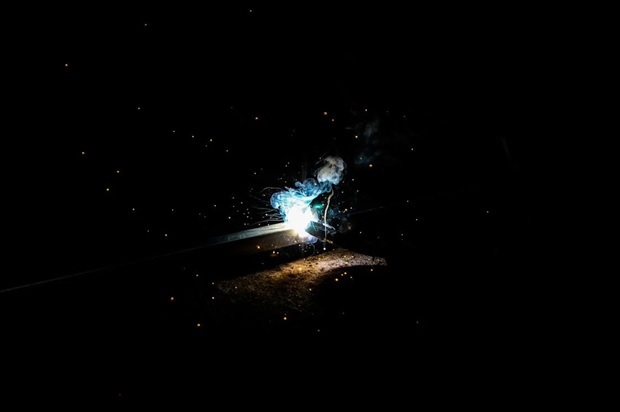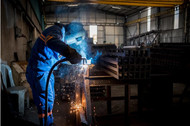Welding Cable Safety and Care
27th Jul 2024
Welding as an industrial process is not without its risks. The high current carried by welding cable can increase the risk of shocks, and exposure to UV can cause burns and eye damage. These reasons and others are why welders must use specialized personal protective equipment.
In the realm of safety, the equipment used is also central. This is one of the reasons that specialized welding cable for sale is reserved for this application.
This post will cover the specialization of welding cable for sale, along with the importance of safety and proper care of electrical cables used for welding.
The Importance of Durability and Flexibility in Welding Cable for Sale
One of the most important attributes of welding cable is that it be of the proper gauge to support the application. Cable that is too thin will overheat and create a much higher risk of electrocution as well as electrical fires, which are particularly dangerous because water cannot be used to put them out.
Beyond that, there are several physical characteristics that define welding cable, too. One of the most important of these is that the cable be as flexible as possible. This is the reason that welding cable is sometimes marketed as “flexible welding cable.”
Welding cable must be flexible to enable the welder to access the workpiece with his equipment. Since the workpiece is often static, the equipment must be maneuvered into place, rather than the other way around. To achieve the highest possible flexibility, welding cable for sale is often manufactured with a very high strand count of very thin conductors.
Another definitive feature that is central to welding cable is durability, which in turn is largely determined by the type of insulation used. Durable synthetic insulation materials are used to produce welding cable, and they often yield insulative jackets that are resistant to abrasion, chemicals like acids, bases, oil and gas, as well as UV light and weather. The tougher the cable, the better it will resist hard use, while also protecting the welder against the risk of shocks.
The cables should also be comfortably long enough for the job. Never overextend them or subject them to harsh use. Make sure you never exceed the working voltage or amperage ratings of the cable, either
Yet, even with the appropriate type and rating of welding cable, it is still critical to observe the best practices for welding safety.
Welding Cable Safety
What you do with welding cables on a job site is every bit as important as making sure that you use appropriate cables for the job.
For one thing, keep the cables out of water, and avoid puddles and ditches. Though the cable might be rated to handle moisture and exposure, allowing your cables to sit in water or mud will accelerate the breakdown of the insulation and result in shorter service lifespan. Prolonged exposure to moisture is never a good thing.
When in use, protect the cables against exposure to grease and oil, and shield them the best you can against jumping sparks that can melt and otherwise damage the insulation.

Also, you should never expose the welding cable on a job site to any stressors that can be avoided. Specifically, do not allow other workers to walk all over the cable, or vehicles to ride over them. This is dangerous, increases the risk of electrical shock, and will accelerate the decay of the cable’s insulation.
Another pointer to improve safety on the job site and extend the service life spans of your welding cables is to make sure you never drag them around. Dragging cables even a short distance will cause abrasive damage and fraying to the insulative jacket that will wear it down, increasing the risk of electric shock. Where the jacket is compromised, it will also expose the jacket to corrosion. Overall, dragging cables is a huge misstep that must be avoided in order to ensure a longer service lifespan.
As for care, when not in use, welding cables should be stored appropriately, and covered in a responsible fashion so as to shield them from the weather, including precipitation and sunlight exposure. Both moisture and UV light will eventually break down the welding cable’s insulation, even if the cable is rated for exposure to both. Better to protect it than to test it.
Another aspect of routine welding cable care is to inspect routinely. Look for areas where the jacket might be abraded, as these areas can result in a much higher risk of electric shock. Moreover, areas where the jacket is compromised will expose the cables to the elements, and can allow them to corrode. Where corrosion starts, it can travel up and along the cable under the insulation. This can result in overheating and a higher risk of electrical shock, or equipment failure.
If you see a welding cable that is frayed or which has a jacket which has been compromised in some other way, replace it immediately. Never use welding cables that have noticeable damage. Repairs may be possible in some instances but it’s much safer simply to replace compromised cables rather than trying to repair them.
All in all, routinely inspecting your welding cables and replacing them where necessary is an investment not only in the performance of your equipment, but in workplace safety as well.
Here for Welding Cable for Sale? 
Looking for high-quality welding cable for sale? You’re in the right place. Our welding cables are made with very thin copper conductors for maximum flexibility, and are made with abrasion and chemical resistant synthetic insulation. Because of their durability, they are also very versatile and may be used (where appropriate) as solar panel cable, as battery leads, and in other applications.
You can get more information on our welding cables for sale at the previous link, or get in touch with us directly. Feel free to reach out to us at Sales@EWCSWire.com or at 800-262-1598 with any questions you have about our welding cables or other specialty wire or cable.

